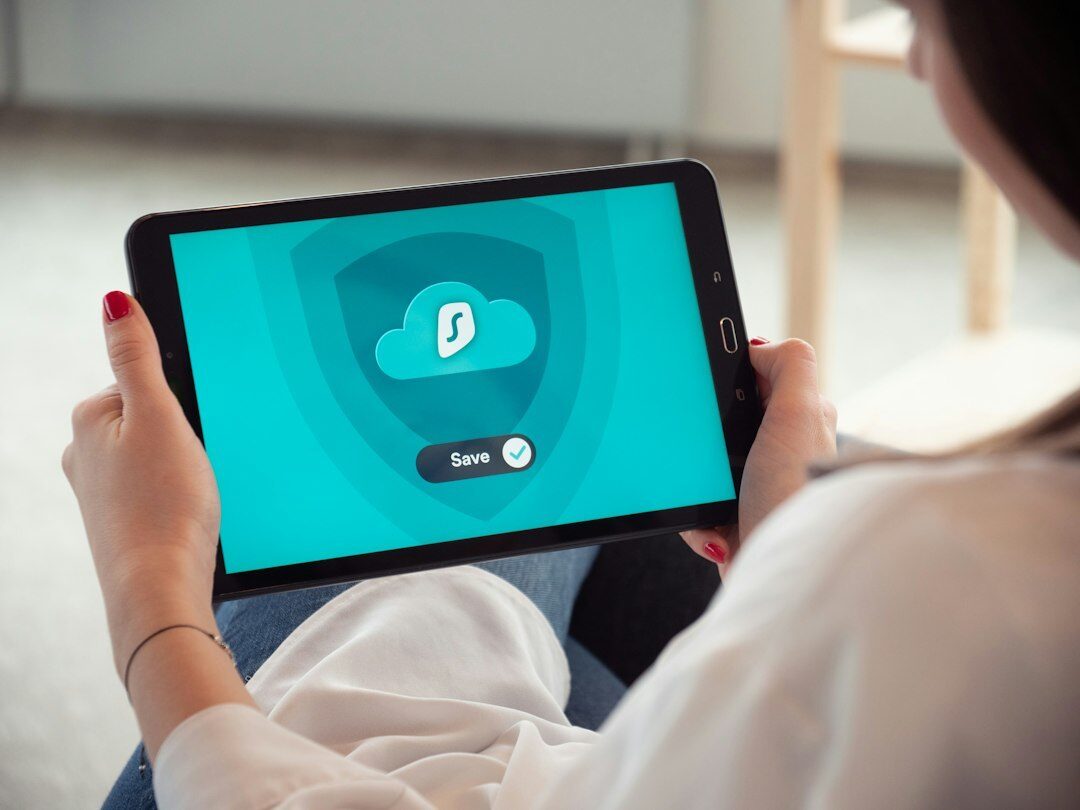Imagine walking into your house after a long day, and with just a quick voice command, the lights turn on, your favorite tunes start playing, and the thermostat adjusts to your ideal comfort level. That’s what is a smart home: it’s where everyday objects get an IQ boost for more convenience in our lives. We’re talking energy savings from smart thermostats like Wyze Thermostat; enhanced security through devices such as Ring doorbell cameras; and even voice assistants like Amazon Alexa making sure you never miss a beat.
This isn’t just about fancy gadgets—it’s about crafting spaces that work harder for us. By diving into this article, you’ll grasp how these digital maestros bring ease to tasks we once did manually—saving time while keeping tabs on energy consumption.
What Is a Smart Home?
Imagine living in a home that responds to your needs like an attentive butler. That’s essentially what a smart home does, using technology to make life easier and save money. By the end of 2017, over 130 million devices were predicted to be making homes smarter around the globe.
The Evolution of Home Automation
Gone are the days when flipping switches and manual adjustments were part of daily routines. The journey from traditional houses to connected spaces is akin to upgrading from old-school flip phones to today’s smartphones. With Google Nest Mini, for instance, you can tell your house what you need without lifting a finger.
In just one year, shipments soared from 80 million units worldwide; it’s clear that smart homes aren’t just fancy gadgets—they’re becoming standard living conditions.
The Basics of Smart Homes
A basic understanding introduces us to various elements—from voice assistants like Amazon Alexa enabling effortless interactions with our surroundings by simply speaking commands aloud—to security cameras watching over our nests vigilantly day and night. In this interconnected realm, everything works together seamlessly through an internet connection—think lights turning on as dusk falls or music playing at just the right volume when guests arrive—all controlled remotely with utter convenience.
Amazon Echo devices bring this magic into every room while innovative products such as Wyze Thermostat regulate temperatures efficiently helping cut down energy costs significantly—and who wouldn’t love seeing their utility bills shrink?
How Smart Homes Work
The modern smart home is like a symphony where each instrument plays its part to create a harmonious experience. It’s all about gadgets that talk to each other, creating an environment that adjusts to your needs and activities.
Understanding the Functionality of Smart Homes
At the heart of any smart home lies an internet connection; it’s the backbone that lets devices communicate. Imagine you’re heading out, and with one voice command, lights turn off while your security system arms itself. That’s because these connected gadgets are more than just standalone units—they work together seamlessly through wireless signals.
This synchronization allows for what we call ‘scenes’ or automated settings tailored for different parts of your day. The living room might light up as soon as you walk in thanks to motion sensors triggering smart bulbs. Meanwhile, if there’s unexpected movement when no one should be home, security cameras can send live video straight to your phone.
Automating Tasks with Smart Buttons and Remotes
A flick here or tap there on a remote or app lets you control appliances without moving an inch—efficiency at its finest. Consider this: A cozy movie night can start with dimming lights and drawing blinds using just a small handheld device known as a smart button. But it doesn’t stop there; some remotes even have preset buttons for routines like “Good Morning” which could adjust temperature settings on thermostats such as Google Nest Mini or Wyze Thermostat while brewing coffee in the kitchen.
We’ve come far from clunky manual operations since now our homes learn from us—the ultimate energy-saving machines trimming down those pesky bills along with our carbon footprint. So yes, turning up efficiency means lowering energy costs too.
Google Nest Mini, Amazon Echo, Ring Doorbell Cameras, and others not only bring convenience but also offer greater control over how we live in our spaces.
In 2016 alone over 80 million devices found their way into homes worldwide—a number expected to jump significantly by year-end 2017 indicating people are embracing smarter living every day.
Gadgets aside though remember they’re only safe when protected by strong passwords making sure hackers don’t spoil this high-tech party.
Components and Technology Behind Smart Homes
If you think of your home as a symphony, smart devices are the instruments, internet connection is the sheet music, and voice assistants like Amazon Alexa or Google Assistant are the conductors. Together they create harmony in modern living spaces.
Voice Assistants as Digital Command Centers
Imagine shouting into thin air that you’re too hot, and then feeling an instant breeze as if by magic—that’s what a Google Nest Mini can do when paired with a smart thermostat. Voice commands to these digital maestros let you control appliances without lifting more than a finger. Say goodbye to manual searches for remote controls; just ask your trusty assistant to dim lights or play your favorite tune on smart speakers scattered around your pad.
It’s not all about comfort though—these savvy AIs make sure nothing slips through the cracks by setting reminders so efficiently it would put sticky notes out of business. Whether it’s Google’s version tucked neatly in one corner or an Amazon Echo, perched like a vigilant owl atop your bookshelf—they’ve got you covered.
Enhancing Security with Innovative Devices
You sleep tight while tech stands guard—that’s how security cameras have redefined peace of mind at home. From live video feeds that let you peek from anywhere on earth via smartphone apps, to motion sensors triggering alerts faster than lightning—the future promised us jetpacks but gave us something far cooler: security we can carry in our pockets.
Sure enough, companies aren’t sleeping on their laurels either; Ring has gone beyond ordinary doorbells with its best-selling doorbell camera. It’s like having eagle-eyed guards 24/7 who also happen to be fantastic greeters for guests (or unwelcome solicitors). These gadgets don’t just capture pixels; they provide snapshots of safety—one dinged notification at a time.
In this high-tech concert hall we call ‘smart homes’, each gadget plays its part—from robot vacuums doing pirouettes under coffee tables while avoiding collisions better than seasoned bumper car drivers—to smart fridges keeping track of groceries before they turn into science experiments gone wrong. With these connected gadgets weaving together seamless experiences tailored precisely for convenience and efficiency—it truly feels like stepping onto the set of those sci-fi flicks we used to daydream about… minus any rogue AI taking over the world (we hope).
Setting Up Your Own Smart Home
Creating a smart home is like assembling an orchestra of gadgets; each plays its part in harmony, controlled by the wave of your hand or the sound of your voice. It’s about transforming a living space into one that anticipates needs and simplifies tasks.
Choosing Compatible Smart Home Devices
The key to a symphony, not a cacophony, lies in selecting devices that sing from the same song sheet. When you’re piecing together this puzzle, think Lego blocks rather than jigsaw pieces—look for products designed to work seamlessly with others. A DIY smart Home solution often starts with core elements such as Google Nest Mini, Amazon Echo, or Wyze Thermostat—all aimed at giving you greater control over your environment.
You’ll want to consider what ecosystem fits best with your lifestyle—are you an “Alexa” echo through every room kind of person or more partial to saying “Hey Google”? With compatible devices on board, tasks like having lights turn on as soon as the door unlocks become second nature. But remember: while integrating these digital assistants provides convenience and efficiency gains, it’s vital they’re set up securely—to avoid unwanted guests tuning into your life’s soundtrack.
Implementing Energy-Efficient Solutions
In today’s performance where sustainability gets top billing alongside convenience—the right smart appliances can play lead roles in cutting energy costs without sacrificing comfort. Products like Wyze Thermostat are fine-tuned instruments helping lower energy consumption through intelligent temperature adjustments based on real-time readings and usage patterns—potentially saving homeowners big bucks over time.
A truly efficient smart home also taps into smarter lighting solutions. LED bulbs paired with smart plugs mean never again worrying if you left the kitchen light on—they’ve got their own schedule now. And let’s not forget those who prefer colder drinks—a smart refrigerator, perhaps? Not only does it keep food fresh—it learns when electricity rates are lowest and adjusts its cooling cycles accordingly.
Advantages and Disadvantages of Smart Homes
Smart homes come with a promise of convenience that’s hard to ignore. With the touch of a button or a simple voice command, lights turn on, your door unlocks, and music starts playing throughout your living room. It’s like having an invisible butler who never gets tired.
The Perks: Why You Might Want To Join The Smart Side
Imagine this: you’re snuggled in bed and it’s chilly outside. But thanks to your smart thermostat – let’s say Wyze Thermostat, for instance – the temperature is just perfect inside. That’s energy efficiency at its best. Speaking of saving green, smart home devices can seriously slash those dreaded energy costs over time by learning your habits and adjusting accordingly.
Digital assistants from Amazon Echo to Google Nest Mini have become household names because they make life easier. Need groceries? Just ask Alexa. These digital helpers give us greater control over our homes without lifting more than a finger.
Potential Pitfalls: What Could Possibly Go Wrong?
But wait—before you start converting every appliance into its smart counterpart, consider this; with great power comes…well, some risks too. Security cameras might keep watchful eyes on our homes; however, hackers are always looking for weak spots in our connected gadgets fortress. A strong password is not just recommended—it’s essential.
Likewise, privacy concerns linger as we invite these intelligent devices into our most intimate spaces—like bathrooms equipped with smart speakers (because who doesn’t want tunes while taking a shower?). Always remember that anything capable of sending live video could potentially invade your privacy if not properly secured.
Weighing these advantages against potential disadvantages isn’t merely academic either; studies show that households enjoy substantial cost savings through improved energy efficiency when they embrace smart home tech savvy ways—and yet security remains an ongoing battle needing constant vigilance from both users and manufacturers alike.
To get started on building out your ultimate automated abode—or even simply adding some efficient smart flare—you’ll find no shortage of help online from retailers such as Google Store or platforms dedicated to helping homeowners like Vivint at Start Building the Ultimate Smart home.
Popular Smart Home Brands and Products
When it comes to kitting out your home with smart devices, the market is brimming with options that can turn your living space into a hub of convenience. Whether you’re looking for a voice assistant to manage tasks or a security camera for peace of mind, top-tier brands have got you covered.
Tips for Maximizing Your Smart Home Experience
If saving energy while maintaining comfort sounds appealing, getting acquainted with gadgets like Google Nest or Wyze Thermostat should be on your agenda. These devices learn from your habits to adjust temperature efficiently—meaning you could see lower energy costs without lifting a finger after setup. Meanwhile, Amazon Echo acts as more than just a smart speaker; this digital helper controls other connected gadgets in your house through simple voice commands.
To truly maximize potential and ensure security within these intelligent systems, proper configuration is key. It’s not just about what these devices can do—it’s also making sure they work together seamlessly while keeping hackers at bay. With products such as Ring Doorbell—a best-seller known for its live video feed—you’re able to monitor who’s at the door remotely which means no surprises when you get home.
Creating Secure Network Environments
Digital domain protection goes beyond having strong passwords (although those are essential). For example, LG appliances come equipped with advanced technology but connecting them safely requires an understanding of network settings to prevent unauthorized access attempts. When each device—from light bulbs in the living room to air purifiers—is properly secured and controlled remotely via smartphone apps or even voice command using Amazon Alexa or Google Assistant integration; life becomes simpler yet safer.
Tailoring Device Settings Personal Preferences
Your lifestyle dictates how smart homes should function so customization is vital—whether that means scheduling when lights turn on/off automatically based on motion sensors or setting up alerts from smoke detectors directly sent to smartphones regardless if someone’s there physically.
The Future Outlook on Smart Homes
Smart homes are not just about the convenience of shouting commands into thin air and watching your whims come to life—although, let’s be real, that’s pretty cool. They’re a growing ecosystem poised for massive expansion. With tech advancements rocketing forward and consumer thirst unquenchable, we’re looking at an adoption rate trajectory that would make even the most stoic statistician raise an eyebrow.
Trends in Home Automation Innovations
We’ve seen our living spaces transform from mere physical structures to hubs of digital interactivity where every device has a say in how we live. The smart home sector is like a teenager right now—it’s grown so much already but it still has so much potential. Experts predict this market will only get beefier with time as more folks jump on board the connected lifestyle train.
Take energy efficiency; sustainability isn’t just nice-to-have anymore—it’s essential—and future homes know this. They’ll be slicing down those pesky bills while being kinder to Mother Earth through slick gadgets designed to minimize waste without you having to lift a finger (except maybe to set up that Wyze Thermostat). But here comes the plot twist: all these fancy features won’t mean squat if they’re not secure against cyber nasties trying their luck at hacking your sanctuary—which brings us neatly onto…
Sustainability Initiatives Through Smart Home Tech
A truly smart home doesn’t stop at learning when you want your coffee made or what temperature keeps you cozy at night; it goes deeper by becoming part of larger environmental solutions—because who said saving the planet couldn’t start from your couch? Weaving together devices like Ring Doorbells, which keep both burglars and energy consumption in check, or appliances that order groceries before you realize you need them (I’m looking at you, LG ThinQ Refrigerator) can redefine ‘home management’ entirely.
All jokes aside though, creating a networked nest gives us control over our domains unlike ever before—from making sure lights turn off when no one’s around (hello lower electricity bill), ensuring doors lock themselves after everyone leaves because apparently remembering is too hard sometimes. And guess what? This cleverness helps save money too since devices work smarter—not harder—to reduce unnecessary energy use.
Conclusion
So, you’ve explored what is a smart home. You’ve learned how connected devices mesh together to make life smoother and more secure. From voice assistants like Amazon Alexa to the energy-efficient prowess of gadgets such as Wyze Thermostat—smart homes are reshaping our daily routines.
Remember, setting up your living space with these tools can save money on energy costs and offer greater control over your environment. Think about it: lights that automatically turn off when not needed or security cameras giving live video feeds for peace of mind.
But keep in mind, the journey doesn’t end here. With every new device comes a learning curve and responsibility—like using strong passwords for protecting against unwanted access.
Start transforming your abode today; let technology lend a hand in creating an efficient smart haven that echoes your lifestyle needs.








